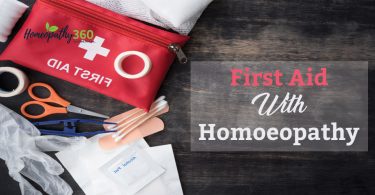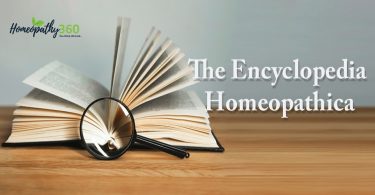‘It is no proof of man’s undertaking to be able to confirm what he pleases; but to be able to discern that what is true is true, and what is false is false, this is the mark and character of intelligence’ . —Emanuel Swedenborg
J T Kent’s contribution to the homeopathic literature for the profession has served to be the most essential and authentic for all homeopaths alike. From the Lectures on Materia Medica, Philosophy and the Repertory that forms the basis of most of the modern repertories, along with the smaller writings and essays on various subjects, Kent has proved to be an exceptional author and homeopath.
Some of his works that are accessible through RadarOpus have been described below.
J T Kent’s Repertory of the Homoeopathic Materia Medica
‘Wherever Homoeopathy is practiced, the use of this fundamental work written by Dr James Tyler Kent is of greatest importance…’ Ehrahart & Karl (Preface to the Sixth Edition)
As already mentioned, Kent’s Repertory forms the basic ground work for many other repertories. It is essential to understand the plan and philosophy of this repertory for the effective utilsation of this authentic work.
Figure 1: Kent’s Repertory
J T Kent’s Lectures on Homeopathic Materia Medica
In the Preface to the First Edition Dr J T Kent wrote, ‘The Materia Medica can be learned by careful study and by using it. It can be understood but not memorized. All who would memorize the Materia Medica must ignominiously fail. To be constantly at hand, it must be constantly and correctly used. The continuous study of the Materia Medica by the aid of a full repertory for comparison is the only means of continuing in a good working knowledge. To learn the Materia Medica, one must master Hahnemann’s Organon, after which the symptomatology and the Organon go “hand in hand”. The Organon, the symptomatology, and a full repertory must be the attained and maintained…
October 29, 1904.
108 N. State St., Chicago.
JAMES TYLER KENT’
This book contains the lectures by Kent on drug pictures of remedies that he delivered at the Post-Graduate School of Homoeopaths in Philadelphia. The popular colloquial presentation of the remedies provides an easier grasp of information to the students.
Figure 2: Kent’s Materia Medica
J T Kent’s Lesser Writings
……These are only a part of Doctor Kent’s writings and were selected from various libraries after considerable effort and are considered the best results of his pen… W. W. Sherwood, M.
This book was first published in 1926. It is a collection of 29 remedies, several clinical cases, published articles, lectures and writings of Kent. This work provides a grand opportunity to observe how Kent practiced, e.g., the use of potencies etc.
It has following segments:
- Preface
- Kent’s New Remedies
- Characteristics Symptoms
- Lesser Writings
- Clinical Cases
- Aphorisms and Percepts from extemporaneous lectures
Figure 3: Kent’s Lesser Writings
J. T. Kent’s The Dunham Lectures
The foreword of this book is written by Chris Ellithorp & Jay Yasgur.
‘…Kent had established himself at Dunham, and later, Hering. Many of these had previously been printed in an unrevised form in various journals. But the initial Dunham lectures, and a great deal more, are unavailable to the many not having access to old journal files. The Anthracinum lecture is from a bound volume of mimeographed Kent Materia Medica studies found in the library of Dr. Rufus Thurston, a fellow member of The Society of Homeopathicians and one who had prevailed upon Kent to publish his repertory. …….Chris Ellithorp’
Four remedies have been explained in detail:
- Anthraxinum
- Chamomilla
- Phosphorus
- Pulsatilla
Figure 4: The Dunham Lectures
J T Kent’s Lectures on Philosophy
‘….Homoeopathy is now extensively disseminated over the world, but, strange to say, by none are its doctrines so distorted as by many of its pretended devotees. Homoeopathics treats of both the science and the art of healing by the law of similars, and if the artis to remain and progress among men the science must be bette understood than at present. To apply the art without the science is merely a pretension, and such practice should be relegated to the domain of empiricism. To safely practice the art of curing sick people, the homoeopathic physician must know the science.
James Tyler Kent
Evanston,Ill., July 1, 1900’
Along with Organon of Medicine by Samuel Hahnemann, this book by Kent is an embodiment of the principles and philosophy without which practicing homeopathy successfully is an uphill task.
Figure 5: Kent’s Philosophy
J T Kent’s Use of the Repertory ‘How to Study the Repertory’
It has 3 segments:
- Use of the Repertory
- How to Study the Repertory
- How to use the Repertory
The use of the Repertory in homoeopathic practise is a necessity if one is to do careful work. Our Materia Medica is so cumbersome without a Repertory that the best prescriber must meet with only indifferent results…– Dr J T Kent
…When I take up a full case for study, I single out all the expressions that describe the general state, such as the aggravations and ameliorations of the general state of the patient or of many of his symptoms. I next consider carefully all his longings, mental and physical, all the desires and aversions, antipathies, fears, dreads, etc. Next I look for all the intellectual perversions, methods of reasoning, memory, causes of mental disturbances, etc. All these I arrange in form together, in order to set opposite each one all remedies in corresponding rubrics as found in the Repertory. By the cancellation process it will soon be seen that only a few remedies run through all these symptoms, and therefore only a few are to be carefully compared in order to ascertain which one of all these is most like the particular symptoms not yet lined up to be considered as the first ones have been considered.
Hahnemann teaches in the 153rd paragraph that we are to give particular attention to such symptoms as are peculiar and characteristic. He teaches also that the physician must pay his earnest attention to the patient. Now if these two things are duly considered, it will be seen that Hahnemann’s idea was that a characteristic symptom is one that is not common to disease but one that characterizes the patient. All the first lot of symptoms singled out for a more comprehensive view are such, as characterize the patient, and are predicated of the patient himself. By treating a portion of the symptoms in this way we have reduced the list of possible remedies to a few or perhaps only one. As it is necessary to consider the totality of the symptoms for a basis of the homoeopathic prescription, it is now necessary to examine all the rest of the symptoms in order to ascertain how these few remedies correspond with all the particulars. – Dr J T Kent
Figure 6: How to Study the Repertory
J T Kent’s ‘What the Doctor Needs to Know in order to Make a Successful Prescription’
‘To apply the homoeopathic remedy properly that condition of the individual patient must be known by the voice of nature speaking through symptoms.’ – J T Kent
In this small book, Kent has given the basic guidelines for beginners and subsequent sections contain the questions to be asked from the patient in order to form a complete totality of the case.
Figure 7: What the Doctor Needs to Know in order to Make a Successful Prescription
References
- Kent, J T 2003, The Art and Science of Homeopathic Medicine. Unabridged, clothbound Deluxe Dover ed. N. Chelmsford, MA: Courier Dover Publications.
- Kent, J T 2013, Repertory of the Homoeopathic Materia Medica. Reprint ed. 27th Impression, B. Jain Publishers, New Delhi
- Kent, J T 2003, How to Use the Repertory, B. Jain Publishers, New Delhi
- Kent, J T 1979, Lectures on Homeopathic Philosophy. Volume 1 of Fundamental Doctrines In Healing. 2nd ed, reprint. Berkeley, CA: North Atlantic Books.
- Kent, J T 2013, Lectures on Homoeopathic Philosophy. Reprint ed. B. Jain Publishers, New Delhi
- Kent, J T 1984, Lectures on Homoeopathic Materia Medica: Together with Kent’s “New remedies” Incorporated and Arranged in One Alphabetical Order, Reprint ed. B. Jain Publishers, New Delhi
- Radar Opus Premium Version Program and Databases, Archibel, Belgium, Version 1.38
About the Authors
Dr Alpana Jha is an enthusiastic homeopath and a public health professional. She completed her BHMS degree from Pt. JLN State Govt. Homoeopathic Medical College and Hospital, Kanpur, India and Masters in Public Health from Allahabad, India.
Dr Ashish Kumar Jha completed his MD in Homeopathic Pharmacy from B R Ambedkar Bihar University, Muzaffarpur, India under the guidance of Dr PCP Gupta- a renowned homeopathic practitioner from Kalyan, West Bengal. He is currently the ‘Head’ in Indian subcontinent for the educational training and development of Radar Opus – Archibel, Belgium. He is also pursuing Post Graduate Diploma in Clinical Psychology.





